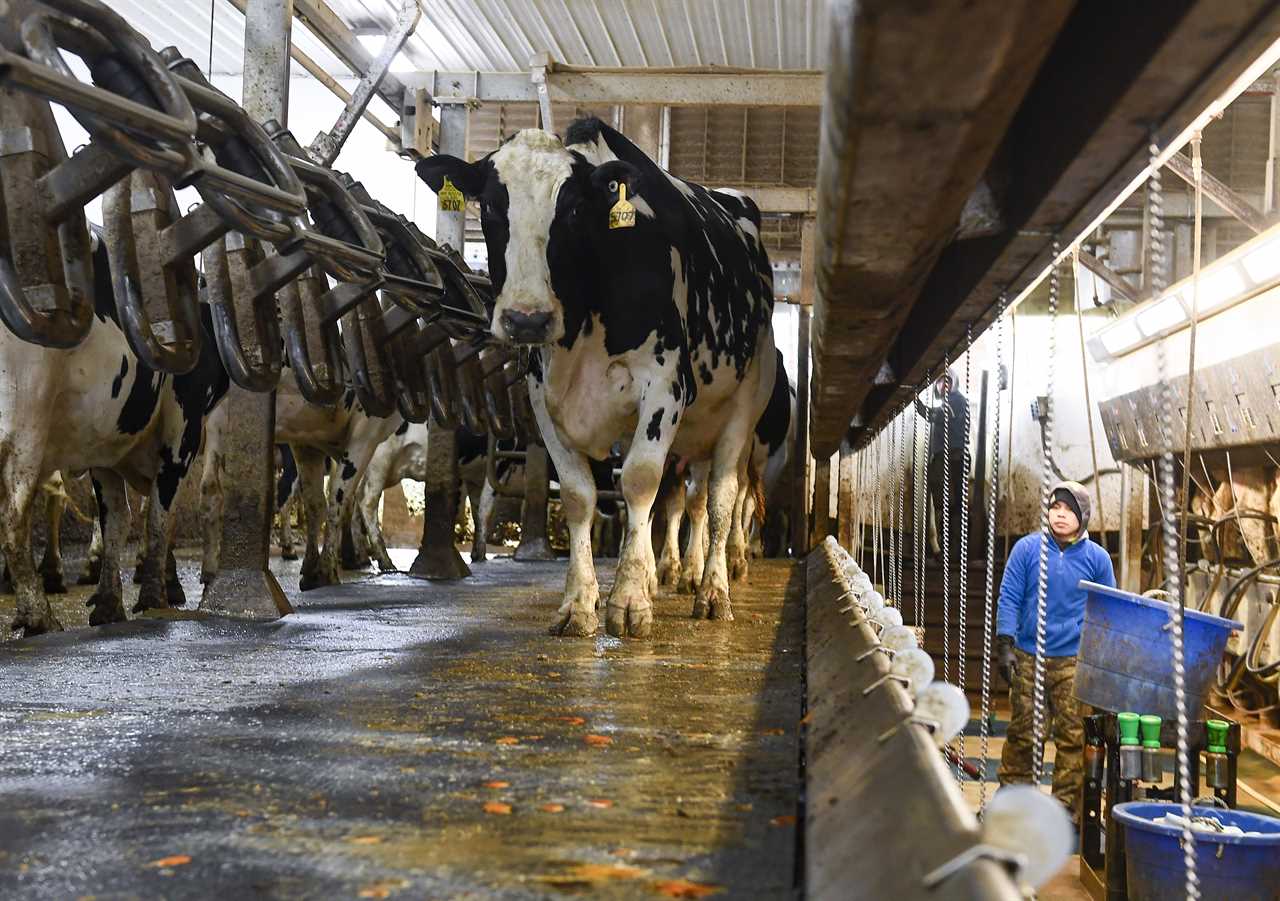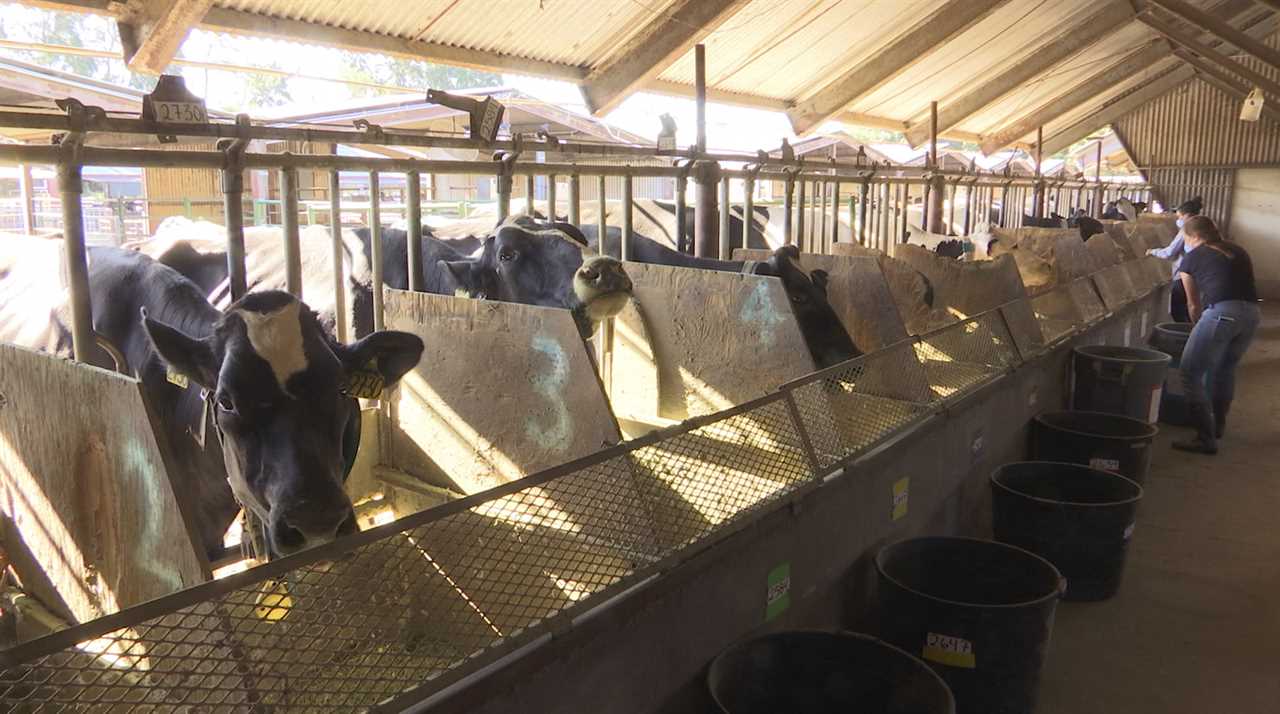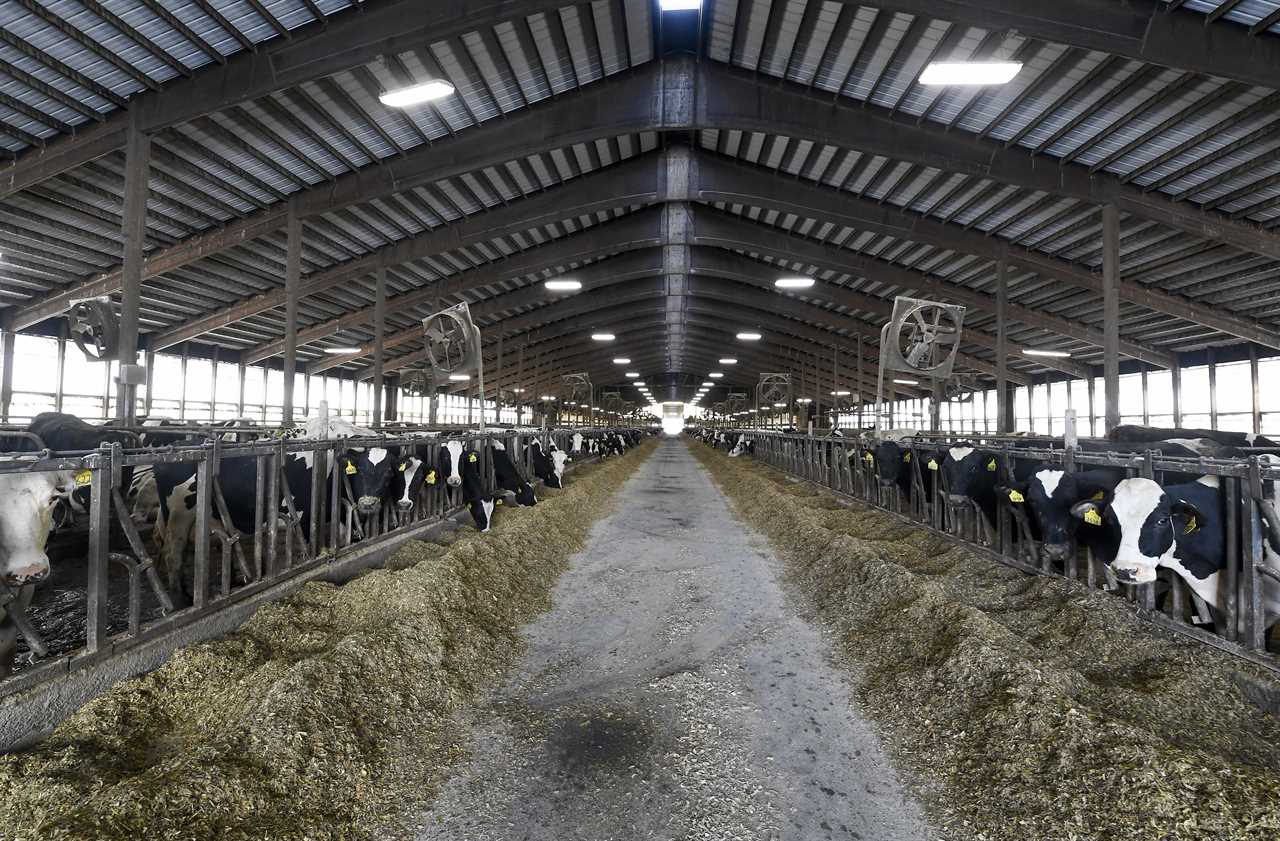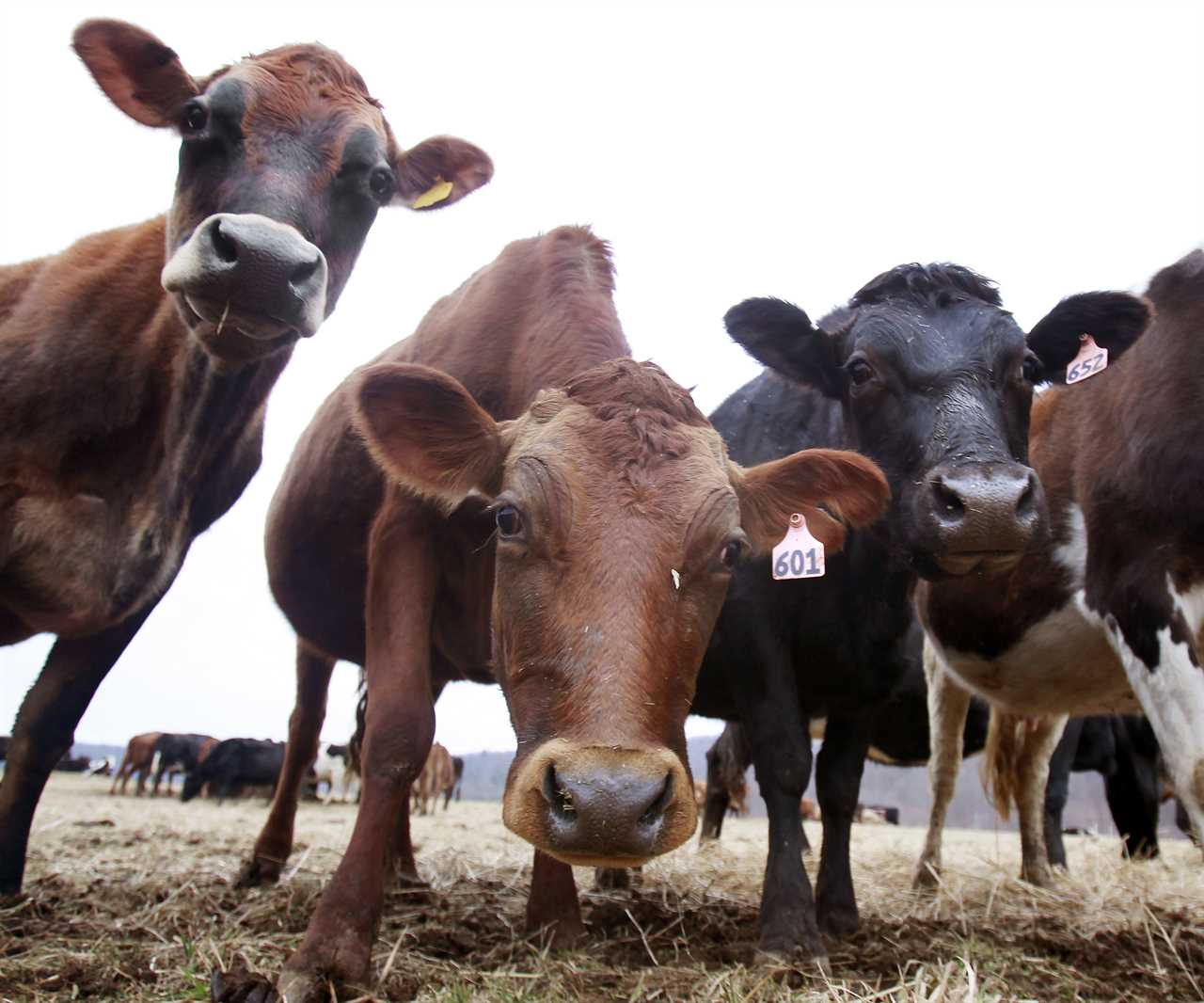
ALBANY, N.Y. — While New York and California race to achieve ambitious emissions cuts and lead the way on fighting climate change, the two states are on a collision course over an unusual endeavor: using cow poop as fuel to power trucks.
Trucks and buses in California are being pushed to use low-carbon fuels, including natural gas produced from cow excrement and landfills that would otherwise vent methane, a potent planet-warming gas, into the atmosphere.
Enter New York.
While New York doesn't have a coherent policy on how to handle these emissions yet, that hasn't stopped developers from flocking to New York's dairies and landfills looking for, perhaps, a new black gold rush to meet climate goals.
They aim to clean up gas produced by cow manure, put it in trucks, inject it into an interstate pipeline — and sell the environmental benefits across the country in California.
Some are skeptical.
“There’s a bunch of headhunters out there making promises they can’t all keep,” said New York Farm Bureau president David Fisher, who is also considering a renewable gas project at his dairy farm.
States with ambitious environmental agendas are trying to figure out how to rapidly slash emisssions, including those targeted by these projects, even as federal action languishes.
California's policy creating incentives for lower-carbon fuels is being implemented in Washington and Oregon, expanding the market for gas from landfills and manure, and leading to a national boom in the number of dairy farms installing equipment to capture, clean and sell gas from manure.
While other states are also seeing renewable gas exported to California's market, few have climate targets as far-reaching as New York's.
New York's climate law requires emissions to be cut from 1990 levels by 85 percent by 2050.
And transitioning New York to a decarbonized economy requires eliminating the burning of virtually all gas, according to most modeling.
Manure stored in "lagoons" at big dairies vents significant amounts of methane — an especially potent greenhouse gas that contributes to the warming climate — as the fermentation started in a cow's stomach continues. Rotting trash in landfills similarly releases substantial amounts of methane, forcing some facilities to burn off the excess.
But, because New York is still developing its plan to meet its emissions goal, officials have yet to develop a coherent policy to address those sources.
Some environmental advocates want this gas captured and turned into fuel for transportation or electricity, with incentives set up by the state.
But many of them also warn the combustion of cleaned-up methane still emits planet-warming carbon dioxide and health-harming pollutants. Incentives could prolong the life of leaky pipelines and support continued use of fossil gas, they said.
California and New York, sharing goals and manure

California has its own ambitious climate targets and is farther along in some respects on policies to achieve emissions reductions than New York.
In California, the state’s low-carbon fuel standard rewards transportation fuels with lower “carbon intensity” scores — and not even renewable electricity scores as low as methane captured from cow excrement and landfills.
So here's the enticement from one coast to the other: California's incentive — and the lack of policy in New York — has led to a largely unexamined shift that may have a perverse effect on greenhouse gas emissions.
“The longer the supply chain, the more methane emissions are going to occur,” said Tristan Brown, an associate professor at SUNY College of Environmental Science and Forestry. “If you really want to maximize the benefits of anaerobic digestion, you want to use the biogas on site.”
Some New York dairies that received in-state support to install anaerobic digesters to capture gas emitted by the manure and burn it for electricity are now partnering with companies to clean up and sell the gas (or just its environmental benefits) out of state, mainly in California.
The Bluebird Renewable Energy project involves building about five miles of new pipeline to join two dairy farms in upstate New York in producing pipeline-grade renewable natural gas.
But while the goal is to cut emissions, the dairies already capture planet-warming gasses from manure and burn it to produce electricity. Environmental groups have raised concerns about the climate benefits of trucking the gas to a pipeline instead.
New York’s energy and environmental agencies have been quietly permitting and financially supporting multiple projects dotting upstate's bucolic landscape.
Creating renewable natural gas "through anaerobic digestion at landfills and manure storage is one way to reduce methane generated at these sources, as robust evaluations of available technologies and practices to determine optimal emissions reductions strategies continue to advance," said Haley Viccaro, spokesperson for the state Department of Environmental Conservation, or DEC.
There’s no indication the state has applied heightened scrutiny, despite developers’ plans to export the environmental benefits they’ve claimed make the projects compliant with the climate law. Some have also indicated they plan to sell into the market supporting the federal renewable fuel standard.
“For New York to separately claim an environmental benefit is simply double-counting,” said Josh Berman, a senior attorney with the Sierra Club.
Meanwhile, California dairy and landfill project owners are warily watching the influx of out-of-state entrants. California fuel suppliers only need to buy so many credits to meet the standard, and a decline in credit prices as demand has fallen means that projects could be less profitable.
Out-of-state projects have a slightly higher carbon footprint to transport the fuel to California, but they also are typically cheaper. That worries in-state dairy farms that have about 80 digesters across California and another 120 in development.
“There's a lot of projects coming in from out of state,” said Michael Boccadoro, executive director of the group Dairy Cares, which represents California dairies.
“To the degree that it's displacing projects in California, that's going to be problematic for me and lots of other people.”
Financial support

Several projects have already been approved by New York's DEC, with staff citing the environmental benefits despite their out-of-state destination. Three farms in western New York are working with a Canadian company that secured $300,000 in grants from the New York Power Authority.
The state has also leveraged its financing powerhouse, the New York Green Bank, to support projects that plan to export benefits.
Chautauqua County, which has about 120,000 residents and sits on the shore of Lake Erie southeast of Buffalo, already has a gas-to-electricity plant at its Jamestown landfill. That plant ensured waste gas could be captured, burned and turned into energy.
But with low electricity prices, the county turned to a private company that promises to turn the gas into pipeline grade methane and truck it elsewhere for sale. The project developer, a subsidiary of CGE Ventures LLC, secured state assistance in the form of a $17.4 million construction loan from the Green Bank in January 2021.
“You’ve got refineries and different entities out there that are required to pick up some of those credits,” CGE spokesperson Dennis Holbrook said. “There are also credits for the electric generation, but right now they’re not as lucrative.”
One landfill, Seneca Meadows in Waterloo in central New York, is provisionally certified to sell their upgraded gas into California’s low-carbon fuel standard market, documents show. The Oneida-Herkimer Solid Waste Authority is seeking proposals from developers to utilize its landfill gas, as well.
Lack of incentives

New York’s landmark 2019 climate law does not consider electricity produced with biogas to be renewable. So farm and landfill-based digesters are no longer eligible for new subsidies.
The low payments for electricity produced at the sites is one factor driving the rush toward upgrading biogas produced at dairy farms and landfills in New York. Cook said the costs for utility service are still high. Keeping the generator to warm the digester running requires someone with mechanical skills on call 24/7.
“It took me a while to warm up to the idea of renewable natural gas and injecting it into the pipeline,” said Bill Cook, who founded Aurora Ridge Dairy in 1984. The dairy, with 2,400 cows, is one of two working with DTE Energy on the Bluebird project. The project is located north of Ithaca, in the Finger Lakes region.
The Bluebird project is set to have the most public and potentially thorough vetting of its climate credibility because it requires an approval from the New York Public Service Commission.
Fisher’s dairy farm has about 3,000 cows in Madrid, in St. Lawrence County near the Canadian border.
He currently separates out fiber from the manure for use as bedding, then stores the liquid remaining in lagoons and spreads it on crop fields to fertilize them. They considered a digester nearly a decade ago, but the electricity revenue wasn’t sufficient.
He said he’s now considering a partnership to capture the biogas and upgrade it — and the prospect is financially and environmentally attractive.
“Dairy margins are really tight, so if we can get some money out of a byproduct that’s a good thing,” he said. “It is the right thing. If we can keep methane out of the atmosphere, it’s good.”
Debra Kahn contributed to this report.
----------------------------------------
By: Marie J. French
Title: How cow manure from New York is bolstering California's emissions goals
Sourced From: www.politico.com/news/2022/02/19/cow-manure-new-york-california-emissions-00007370
Published Date: Sat, 19 Feb 2022 07:00:00 EST
Did you miss our previous article...
https://consumernewsnetwork.com/politics-us/pj-how-pj






